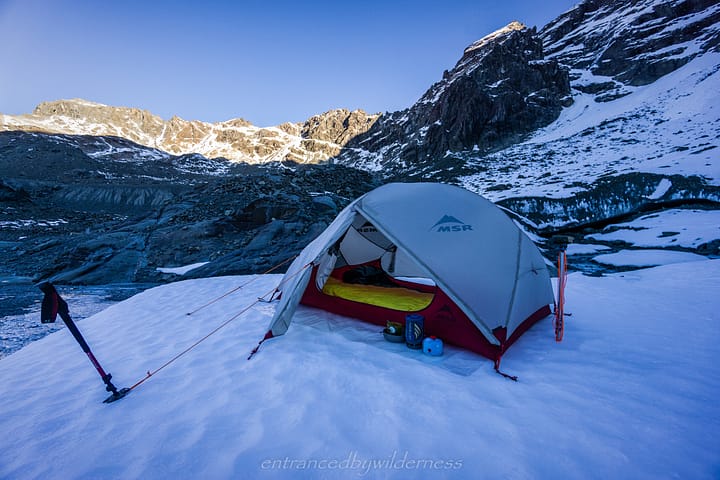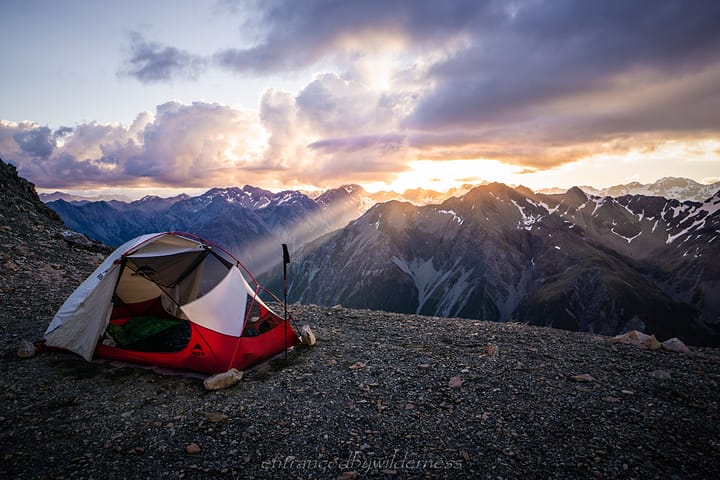Clearing up the misinformation surrounding some confusing terminology surrounding wild tent camping!
Disclaimer
This is an article written by a member of the public (yours truly), and not from an official body. Please take consideration that this is only intended to clarify information about wild tent camping, and that following the linked sources provided is recommended before making conclusions based on this content.
Purpose of this Article
As the internet continues to bring us all closer together in our interest niches with social media platforms like Facebook, we begin to have the power to help one another out. I’ve begun to notice a regular occurrence of a frequently asked question appear on such platforms – “What are the regulations surrounding wild tent camping in New Zealand?”.
The purpose of this article is to clarify misconceptions and misinformation on what the public can, or can’t do in regard to wild tent camping in New Zealand. For many of us, we want to experience the New Zealand backcountry and explore its alluring beauty first hand, and if you Google ‘wild camping’ you straight away get fed misinformation (such as the Tripsavvy blog). Looking at some screenshots below, we can see many blogs and businesses cluttering the searches with misinformation, that clearly are not aiming for Roadside Camping, but also involuntarily include Wild Camping under their definitions. I’m sure these sites had no intention to spread misinformation, but they have only made it difficult to find actual facts. Let’s see what our rights really are!
Also, at the bottom, I’m adding a section on Responsible Camping to help understand how to be a better camper!
What is Wild Tent Camping?
Wild camping is to camp in a tent in public conservation areas NOT in established and recognised camp sites or locations. Essentially, the ‘wild’ is referring to the backcountry, that is, the non-developed public conservation lands that are usually at least an hour walk away from roads.
National Park Limitations
There are limitations to wild camping in National Parks, which can be described by Legislation (note: this links to Fiordland by-laws, but all councils follow the same by-laws) as follows:
Camping
(1) No person shall, without the prior permission of a ranger or officer or employee of the Department, camp in the park within 200 metres of a formed road.
(2) Every person who camps on a camping site in the park shall observe any direction—
(a) which is—
(i) given to him by a ranger or officer or employee of the Department; or
(ii) brought to his attention by an official notice; and
(b) which relates to the part or parts of the camping site that may be used for camping (including a direction that prohibits camping on any part or parts of the camping site).
(3) Every person who camps in the park, whether on a camping site or otherwise, shall leave the area on which he camps clean and tidy after use.
(4) No person shall camp in the park for more than 14 consecutive days without the consent of a ranger or officer of the Department.
Department of Conservation Limitations
It is also important to keep an eye out for other limitations released from the Department of Conservation and (within reason), from local Iwi. Whilst these have no legislative enforcement, they are for a good cause. For example, on the Gillespie Pass Circuit in Mount Aspiring (Tititea) National Park, camping is restricted in the Crucible basin due to conservation of fragile alpine herb fields.
What is Freedom Camping?
The New Zealand Government states that Freedom Camping (via the Freedom Camping Act) ONLY applies to vehicles, and not tents. This statement is very important in understanding what comes below.
The reason for tents not being a part of Freedom Camping is that wild tent camping is restricted to being 200m away from formed roads anyway, making this except from Freedom Camping regulations. I personally like to think of Freedom Camping as ‘Roadside Camping’, alas, the boats… I know.
This information is based off the Freedom Camping Act 2011, which states in section 5:
Meaning of freedom camp
(1) In this Act, freedom camp means to camp (other than at a camping ground) within 200 m of a motor vehicle accessible area or the mean low-water springs line of any sea or harbour, or on or within 200 m of a formed road or a Great Walks Track, using 1 or more of the following:
(a) a tent or other temporary structure:
(b) a caravan:
(c) a car, campervan, housetruck, or other motor vehicle.
(2) In this Act, freedom camping does not include the following activities:
(a) temporary and short-term parking of a motor vehicle:
(b) recreational activities commonly known as day-trip excursions:
(c) resting or sleeping at the roadside in a caravan or motor vehicle to avoid driver fatigue.
(3) In subsection (1), camping ground means-
(a) a camping ground that is the subject of a current certificate of registration under the Camping-Grounds Regulations 1985; and
(b) any site at which a fee is payable for camping at the site
Tent Camping at designated Freedom Camping sites
This is where I really hate using the term Freedom Camping.
Just because tents are not a part of the Freedom Camping Act, doesn’t mean they don’t apply to Freedom Camping sites. Remember, the Freedom Camping Act is policy regarding camping ANYWHERE with motor vehicle access (including boats) unless there are by-laws that state otherwise.
However, designated Freedom Camping sites (like the ones found via Apps such as Campermate) are a little different as they are council serviced areas with no charge (or voluntary donation). These have their own set of rules that councils set about who can stay, and for how long. Many of these are tent inclusive (such as Warrington Domain near Dunedin). This is the only time free public tent camping is allowed within 200m of formed roads in New Zealand.
Leaving No Trace and Responsible Camping
If there’s one thing New Zealand poorly educates its citizens in, it’s Leave No Trace principals, and any other environmental friendly strategies that minimises our footprint in nature. I’m not going to cover all principles, as two are… generic, but they are all covered here.
For most camping, the key principles (in order of importance) are:
The first two are the most problematic, and have the most issues surrounding them with the public use of conservation land.
It’s quite important to know how to poo in the backcountry, and use natural water resources such as creeks, rivers and lakes without contaminating them with waste or chemicals from showering or doing dishes. Many people cover these strategies, such backpacker.com‘s article on personal hygiene when hiking.
I hope this article helped you become more informed!
In order to support the travelling and hiking community, I spend many hours per week or month to adequately document all information and advice for prospective visitors, accompanied by a (hopefully) entertaining insight into my personal experiences. This service is, and will remain free. However, if you voluntarily want to make a contribution and support my travels and thus the creation of new stories and hiking information, here is the button you’re looking for:
Thank you for reading 🙂
Whakawhetai mo te panui!
Your Donation Really Helps!
In order to support the travelling and hiking community, I spend many hours per week or month to adequately document all information and advice for prospective visitors, accompanied by a (hopefully) entertaining insight into my personal experiences. This service is, and will remain, free. However, running a non-profit website and spending time creating content comes with financial and personal costs.
Did you like this article? Share it now:
- Click to share on Twitter (Opens in new window)
- Click to share on Facebook (Opens in new window)
- Click to share on Reddit (Opens in new window)
- Click to share on Tumblr (Opens in new window)
- Click to share on Pinterest (Opens in new window)
- Click to email a link to a friend (Opens in new window)
- Click to print (Opens in new window)











Thanks for the informative summary. Have you come across a definition of what a “formed road” is? There are plenty of backcountry roads with varying degrees of ‘form’.
The “backcountry” refers to areas that are over an hour’s walk from the nearest road end.
You can light campfires in the backcountry only if:
there is no fire ban in place, and
there are no notices prohibiting fires there, and
the fire is at least 3 metres away from trees and anything that could catch fire, and
the fire is smaller than 0.5 m in width and in height.